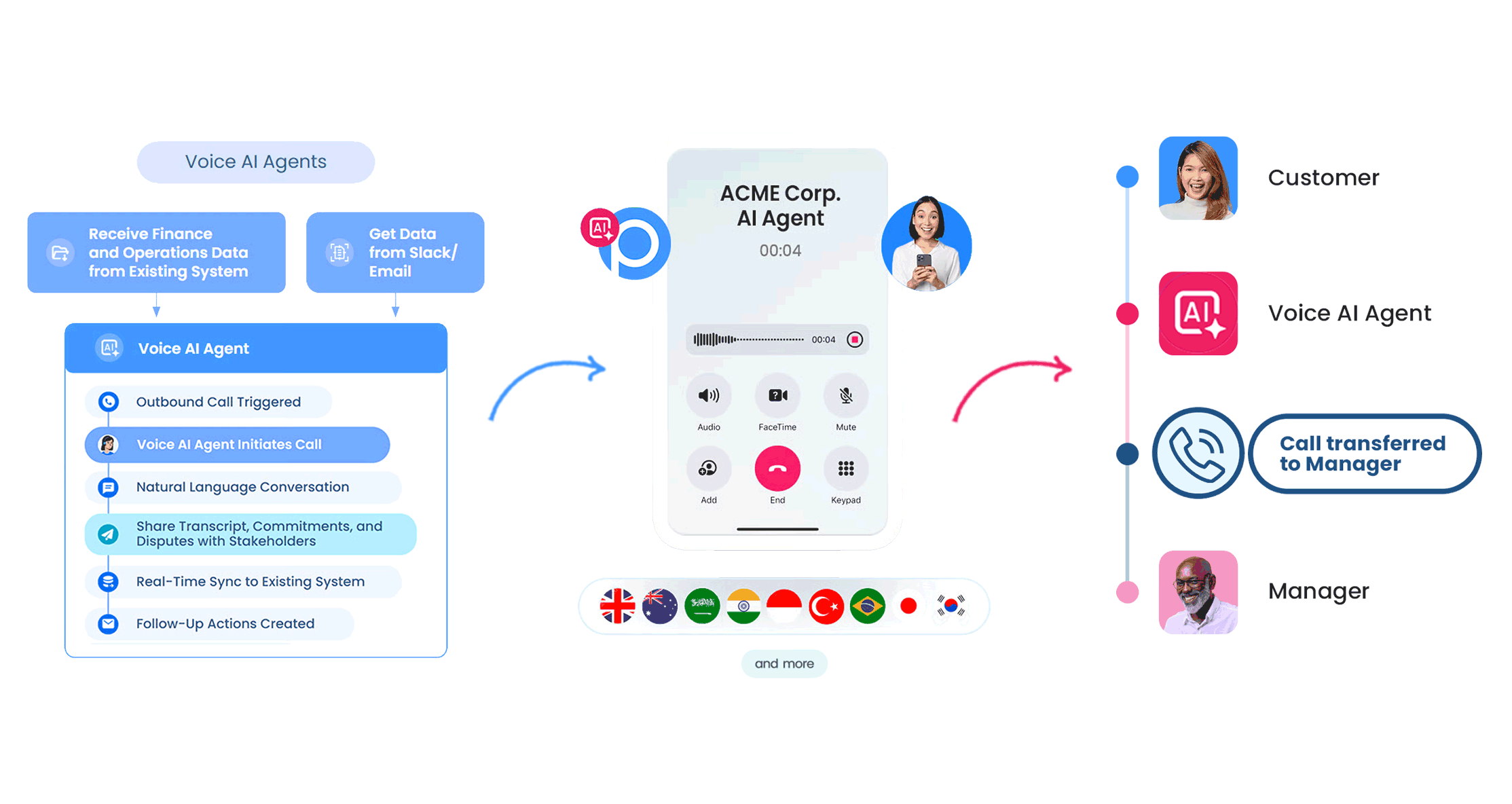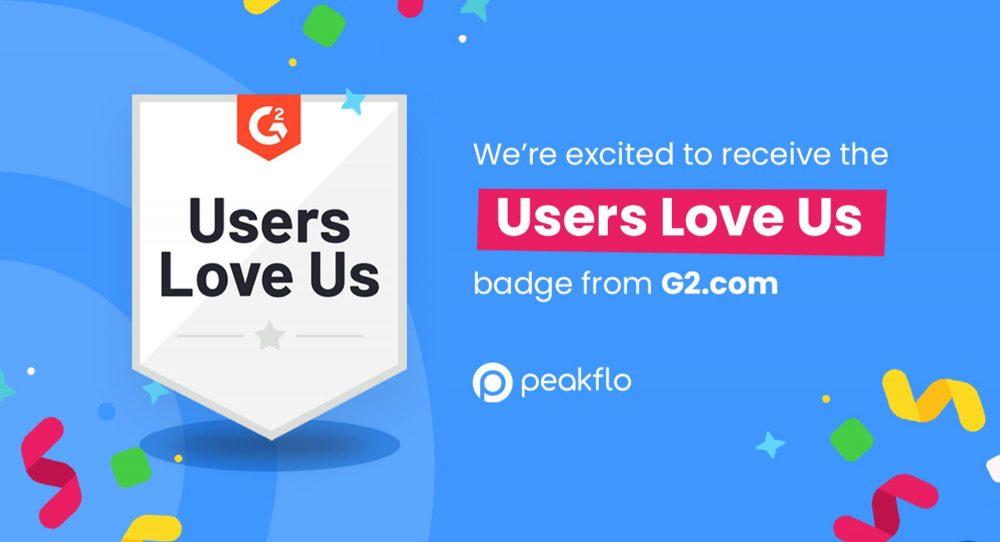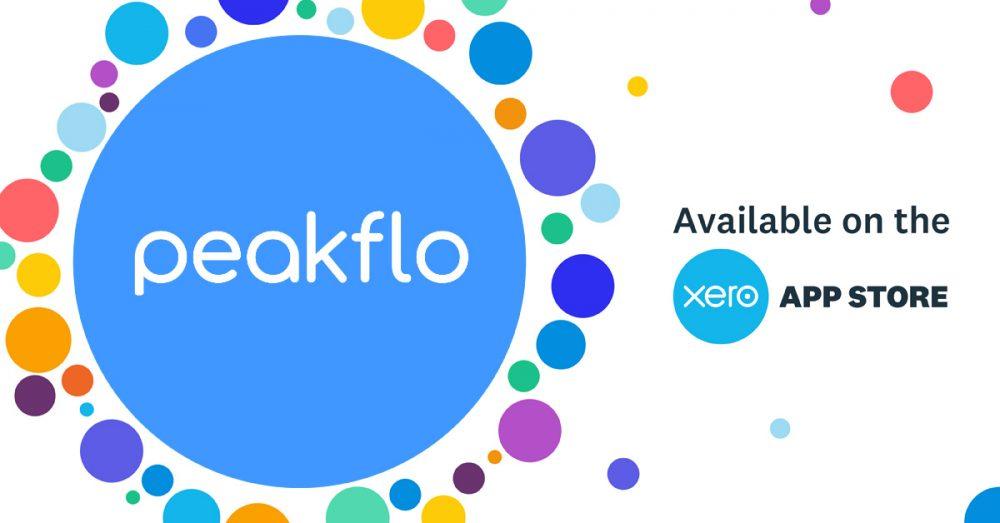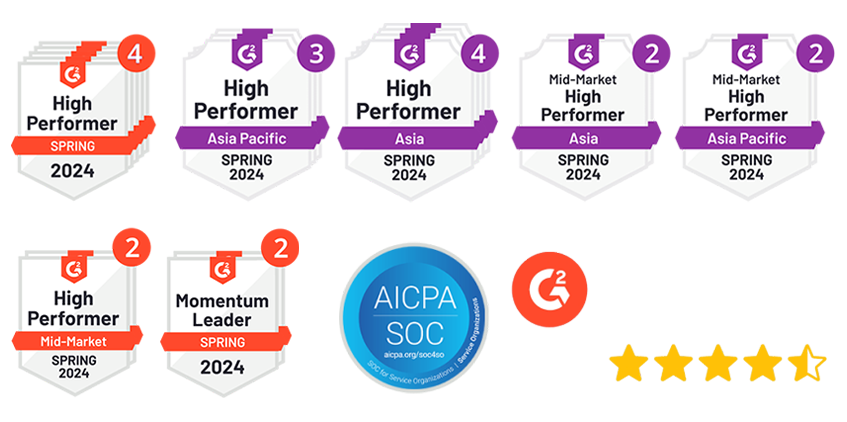Customer service bottlenecks can be a major headache for businesses. Long wait times frustrate callers, while small companies struggle to compete with enterprises that can afford large support teams. Managing phone calls during peak hours or after business hours often means missed opportunities and unhappy customers. AI phone agents are changing how businesses handle these challenges, creating opportunities for companies of all sizes to provide efficient customer service.
These software-driven systems, powered by artificial intelligence, handle inbound or outbound calls without human intervention. What makes them particularly valuable is their ability to manage unlimited call volumes, provide consistent brand-aligned service, and reduce wait times to zero.
AI phone agents solve critical business problems that have plagued customer service for years. These systems can communicate and translate in any language, breaking down barriers that previously limited customer reach. Unlike traditional phone systems, they don’t require extensive technical knowledge to implement or maintain.
The technology has evolved to detect customer emotions like frustration or anger and appropriately alter the course of conversations. This emotional intelligence, combined with unlimited scalability and cost-effectiveness, addresses the fundamental challenges that businesses face in customer communication.
Most enterprises will have at least explored the benefits of AI phone agents by 2025. Understanding how these systems work, their key features, and their real-world applications can help you determine whether this technology fits your business needs.
This guide covers everything you need to know about AI phone agents in 2025, from their basic functionality to advanced features, integration capabilities, and practical applications across different industries.
What Are AI Phone Agents and How Do They Work?
AI phone agents operate through a sophisticated three-stage process that converts human speech into meaningful business interactions. These systems represent a significant advancement over conventional Interactive Voice Response (IVR) technology, handling dynamic conversations rather than simple menu navigation.
Understanding how these systems work helps businesses evaluate their potential and plan implementation strategies. The process involves multiple technologies working together to create seamless customer experiences.
Speech-to-Text and Natural Language Understanding
The process begins when an AI phone agent captures the caller’s voice through advanced speech recognition systems. Google’s Chirp foundation model, for example, converts spoken words into text using technology trained on millions of hours of audio data and billions of text sentences, supporting up to 125 languages and variants.
Once converted to text, Natural Language Processing (NLP) takes over. This technology interprets meaning, context, and intent rather than just recognizing words. NLP enables AI agents to:
- Understand user intent even when phrased differently
- Maintain conversation context throughout the call
- Extract relevant information from complex queries
- Adapt to different accents and speech patterns
Modern speech recognition platforms use deep neural networks trained on vast datasets of human speech across different accents, dialects, and speaking patterns. This allows them to achieve impressive accuracy even with background noise or varying speaking styles.
Real-Time Conversation Handling
AI phone agents excel at dynamic, multi-turn conversations by adapting in real-time based on user input and context. This involves sophisticated dialog management that guides conversations intelligently, handling clarifications and determining appropriate next steps.
Advanced systems incorporate contextual understanding and can detect emotional cues in speech. This capability allows them to respond appropriately to customer frustration or confusion, creating more natural interactions that feel less robotic.
Response time is crucial for realistic conversations. Leading platforms have reduced response times to approximately 500ms, compared to the 5+ seconds common in basic systems. This improvement makes interactions feel natural and eliminates the awkward pauses that characterize older automated systems.
Text-to-Speech and Voice Output
The final stage converts the AI’s response into natural-sounding speech. Modern text-to-speech (TTS) technology has evolved significantly, now offering:
- Natural intonation and appropriate pacing
- Emotional range and contextual emphasis
- Customizable voices across 50+ languages
- Brand-specific voice creation options
Google’s Text-to-Speech AI offers 380+ voices across 50+ languages, while other platforms provide options to create unique brand voices. The latest voice models incorporate human speech patterns (like “um” and “ah”) and accurate intonation, making them nearly indistinguishable from human speech in many cases.
This three-stage process enables AI phone agents to deliver conversational experiences that closely mirror human interactions while maintaining the consistency and availability that businesses need.
Why Traditional Phone Systems Are Failing Businesses
Traditional phone systems are creating more problems than they solve for modern businesses. The shift toward AI phone agents reflects a fundamental recognition that older technologies can no longer meet customer expectations or business efficiency requirements.
The Problem with IVR and Scripted Systems
Interactive Voice Response (IVR) systems have frustrated customers for decades with their rigid, menu-driven interfaces. According to Forrester, 75% of customers find traditional IVR systems frustrating and time-consuming. These systems force callers through complex menus based on the internal company organization rather than what customers actually need.
The financial impact is significant. Ineffective IVR systems can increase operational costs by up to 20%. US businesses waste $934 million annually on transferring IVR misrouted calls, while UK contact centers spend £126 million on the same problem. Customers often abandon calls before completion, with some avoiding companies entirely after negative experiences.
What Makes Conversational AI Different?
Conversational AI technologies address these longstanding issues through natural language understanding and adaptive responses. Unlike traditional systems that rely on keyword detection, AI agents focus on understanding customer intent and maintaining conversation context.
The results speak for themselves:
1. Higher automation rates – Businesses can automate 50% or more of their conversations with AI and conversational IVR
2. Significant cost reduction – Voice bots can reduce call center costs by up to 30% according to McKinsey
3. Better customer satisfaction – 56% of companies using voice bots report higher customer satisfaction rates
The key advantage lies in intent recognition rather than forcing customers through predefined pathways.
How Customer Expectations Are Changing
Customer attitudes toward AI-powered service are evolving rapidly. Already, 81% of consumers believe AI has become part of modern customer service. Furthermore, 72% of customers are open to using AI-powered agents for quicker responses.
However, the balance remains crucial. While 60% of consumers want companies to adopt advanced Voice AI technologies, 36% won’t use a chatbot again after a bad experience. This highlights the importance of implementing sophisticated systems that can handle complex interactions effectively.
Looking ahead, 80% of customer service organizations will use generative AI to improve agent productivity and overall customer experience in 2025. This shift aligns with changing demographics, as even 71% of Gen Zers are likely to reach out via phone for service, expecting systems that understand them without tedious menu navigation.
What Makes AI Phone Agents Different from Basic Automation?
Advanced AI phone agents possess sophisticated capabilities that separate them from basic automated systems. These features enable them to handle complex customer interactions with a level of nuance that approaches human-quality service.
1. Multi-turn conversation handling
The ability to maintain continuous dialogue across multiple exchanges sets effective AI phone agents apart from simple chatbots. Unlike basic systems that treat each interaction as isolated, modern AI agents retain context throughout entire conversations. Customers can speak naturally without repeating information or reframing questions.
Multi-turn conversations include several critical components:
- Context retention that remembers details shared earlier in the call
- Dynamic dialog management that adapts based on user responses
- Error recovery capabilities that prevent conversation breakdowns
This contextual understanding enables AI phone agents to guide customers through complex processes like rescheduling appointments or tracking shipments without losing their place. The most advanced systems can pause flow execution when they need clarification, request specific information, and seamlessly resume with enriched input.
2. Emotion and sentiment detection
AI phone agents can detect and respond to emotional cues beyond just understanding words. These systems analyze speech patterns, tone, pitch, and pace to identify emotions ranging from satisfaction to frustration.
AI sentiment analysis categorizes emotional states as positive, negative, or neutral. When the system detects rising frustration—such as through repeated exclamation points or negative language—it can adjust its approach accordingly. This might involve acknowledging the emotion (“I can see this is frustrating”) or altering the conversation flow.
3. Escalation to human agents
Smart AI phone agents recognize their limitations. Rather than providing incomplete or inaccurate information, they identify their “complexity threshold” and execute seamless handoffs to human agents.
This intelligent escalation process preserves all conversation context and customer data, eliminating the need for customers to repeat themselves. The handoff includes detailed interaction summaries and complete conversation history, enabling human agents to continue seamlessly.
Successful AI systems are designed with escalation as a core feature, not a fallback for failure. This intentional design creates a blended human-AI workforce where each handles the interactions they’re best suited for, maximizing both efficiency and customer satisfaction.
What Are the Business Benefits of AI Phone Agents?
AI phone agents deliver measurable business value through three main areas that directly impact your bottom line. Understanding these benefits can help you evaluate whether this technology fits your operational needs.
1. Significant Cost Reduction and Constant Availability
The financial impact is substantial—businesses report cost reductions of 60-80% compared to traditional call centers. This decrease comes from multiple sources: staffing expenses drop by 60-70% when replacing human agents with AI, training costs disappear entirely, and management overhead shrinks by up to 90%. AI-powered solutions start at just $0.08-0.09 per minute, making enterprise-grade call handling accessible for smaller organizations.
AI systems operate continuously, which addresses a critical business problem. Research shows 80% of callers hang up when reaching voicemail, often calling competitors instead. Constant availability ensures businesses never miss opportunities after hours or during peak periods.
2. Higher Customer Satisfaction Rates
Customer retention directly influences long-term revenue, and AI phone agents prove effective at keeping customers satisfied. With a 99.7% answer rate, these systems eliminate frustrating wait times that drive customers away.
Businesses using AI agents for policy inquiries report impressive results:
- 82% of routine inquiries resolved without escalation
- 45% reduction in average handle time
- 14-point increase in customer satisfaction
Mature AI adopters experience a 15% higher agent satisfaction score, as human representatives can focus on complex, rewarding interactions while AI handles repetitive tasks.
3. Scalable Operations Without Staff Expansion
AI phone agents break the linear growth model of traditional call centers. One AI system can simultaneously manage 10-20 conversations, effectively reducing staffing needs by 85-90%. During unexpected volume spikes, these systems excel—Shopify’s AI support handled a 500% surge during Black Friday while maintaining response times under 30 seconds.
This scalability extends to small businesses, enabling them to handle enterprise-level call volumes without corresponding staff increases. Companies can effectively process 10 times more calls while maintaining service quality.
How AI Phone Agents Connect with Your Business Systems
AI phone agents become most valuable when they connect seamlessly with your existing business tools and data sources. These integrations turn standalone voice technology into a central part of your business operations, ensuring every customer interaction contributes to your broader business processes.
1. CRM and Calendar Integrations
CRM systems like Salesforce, HubSpot, and Zendesk connect directly with AI phone agents to automatically log calls, update customer records, and trigger follow-up actions. This eliminates manual data entry while ensuring every conversation feeds into your sales pipeline. When a customer calls about a previous order, the AI agent can instantly access their purchase history and provide personalized service.
Calendar integrations work similarly with services like Google Calendar. AI agents can check availability in real-time, book appointments without scheduling conflicts, and instantly sync events across all your devices. This means no more double-bookings or missed appointments due to coordination errors.
2. API and Webhook Support
Webhooks provide instant data transmission between AI phone agents and your business applications. Unlike scheduled data pulls that check for updates periodically, webhooks push information the moment events occur. This real-time communication enables several key capabilities:
- Call data is instantly updated in CRMs and databases
- Automated workflows that reduce manual follow-ups
- Event-driven actions that keep teams responsive
Most platforms offer compatibility with any system accepting webhooks, without requiring technical expertise or custom coding. This means you can connect AI phone agents to virtually any business system your company already uses.
3. Knowledge Base and Document Syncing
AI phone agents can access your organization’s knowledge base to provide accurate, consistent responses during calls. After connecting to your data sources, the system converts raw information into searchable vector embeddings. This ensures agents can quickly retrieve relevant information while customers are on the line.
When you update your knowledge base, incremental syncing means only new or modified documents need processing. This keeps your AI agent’s responses current without requiring full system updates each time you make changes to your documentation or policies.
AI Phone Agent Developments for 2025
The next phase of AI phone agent evolution will bring several key improvements that address current limitations and expand capabilities. These developments focus on making interactions more natural while expanding the technology’s practical applications.
1. Enhanced Interruption Management
Current AI phone systems often struggle when callers interrupt mid-conversation, creating awkward pauses or conversation breakdowns. The next generation will detect when users start speaking and immediately pause their response. Advanced systems will maintain conversation flow even with erratic callers who frequently change topics or interject.
This improvement ensures smoother conversations regardless of how customers communicate. Whether someone interrupts to ask for clarification or shifts topics unexpectedly, the AI will adapt without losing context or requiring conversation restarts.
2. Voice Technology Advancements
AI phone agents will adapt their tone, style, and conversational approach based on customer preferences. These systems will incorporate subtle emotional inflections—sounding calm, energetic, or concerned depending on the context.
The result is increasingly personalized interactions that feel natural rather than robotic. Each conversation will reflect the appropriate emotional tone for the situation, making automated conversations nearly indistinguishable from human ones.
3. Infrastructure and Global Reach
Reliable AI phone systems require robust technical foundations to function consistently. Companies will continue expanding their dedicated global infrastructure to accommodate large-scale implementations. These improvements ensure consistent performance for international operations, particularly important as 42% of global enterprises adopt agent-based automation.
4. Personalization at Scale
AI phone agents in 2025 will remember past interactions to create personalized relationships with customers. They’ll utilize customer data and behavioral insights for real-time personalization, recalling specific details from previous conversations to add meaningful personal touches.
This capability shifts interactions from simple transaction processing to relationship building. Customers will experience continuity across calls, with AI agents that remember their preferences, past issues, and specific circumstances.
These developments address the current gaps in AI phone technology while expanding what’s possible for businesses seeking to improve customer communication.
Real-World Applications Across Different Industries
AI phone agents are solving specific business challenges across different industries, delivering measurable results where traditional methods often fall short. These practical applications demonstrate how businesses can implement this technology to address their unique operational needs.
1. Customer Support and Ticketing
AI-powered voice systems now resolve up to 70% of scheduling calls without staff intervention. The results speak for themselves. One company contained 65% of voice calls with AI that previously required manual agents. Another business achieved a 50% reduction in ticket volume alongside a 9.44% increase in customer satisfaction. These systems excel at handling routine inquiries, freeing human agents to focus on complex issues that require personal attention.
2. Appointment Scheduling
Healthcare organizations benefit significantly from AI phone agents that automatically schedule patient appointments, handle follow-ups, and manage prescription refill requests. These systems operate around the clock, booking meetings across 19 languages while integrating with popular calendar applications.
The applications extend beyond healthcare. Salons use AI agents for booking haircuts, fitness centers schedule classes automatically, and real estate agents arrange property viewings without manual coordination. This automation eliminates scheduling conflicts and reduces no-show rates through automated reminders.
3. Lead Qualification and Sales
Following form submissions, AI callers automatically contact potential customers to ask qualifying questions and establish meeting times. Businesses implementing this approach experience 20% higher conversion rates.
The first point of contact, AI systems enable sales teams to focus exclusively on high-potential prospects. Rather than spending time on initial qualification calls, sales representatives can concentrate on closing deals with pre-qualified leads.
4. Billing and Payment Processing
Financial operations benefit from AI agents that automate payment reminders, offer flexible repayment options, and process transactions in real-time. These systems reduce operational expenses by 30-40% after implementation.
AI agents generate accurate invoices, track payments instantly, and update financial records automatically. This automation reduces human error in financial processes while ensuring consistent follow-up on overdue accounts.
Why Peakflo AI Voice Agents Stand Out in 2025
While many AI phone agents promise intelligent conversations, Peakflo AI Voice Agents go a step further—bridging automation with action.
Unlike traditional systems that simply answer calls, Peakflo Voice Agents are task-oriented and business-aware. That means they don’t just talk—they do. Whether it’s confirming an appointment, collecting customer feedback, or updating internal records, Peakflo’s agents connect the conversation to real workflows.
- Plug-and-play integrations with ERPs, CRMs, calendars, and ticketing tools
- Memory-powered conversations: agents remember preferences, past issues, and context
- Custom business logic: trigger approvals, create tickets, or escalate intelligently
- Multilingual capabilities: break down language barriers with 50+ supported languages
- Built for real-world operations: automate high-volume calls across support, operations, sales, and more

Ready to reduce support costs, eliminate wait times, and automate high-volume calls? Book a free demo and see Peakflo AI Voice Agents in action.
Key Takeaway
AI phone agents have become a practical solution for businesses struggling with customer service challenges. These systems handle appointment scheduling, lead qualification, and customer support with efficiency that was difficult to achieve with traditional phone systems.
The business case is clear – cost reductions of 60-80% compared to traditional call centers, higher resolution rates for routine inquiries, and the ability to manage call volume spikes without additional staffing. These AI systems eliminate wait times while maintaining consistent service quality across all customer interactions.
What makes this technology particularly valuable is its accessibility. Small businesses can now provide enterprise-level customer service without the corresponding overhead costs. The systems integrate with existing business tools and require minimal technical expertise to implement.
Consider whether your business faces challenges with after-hours calls, peak volume periods, or routine customer inquiries. AI phone agents address these specific pain points while freeing your team to focus on complex, high-value interactions that require human judgment.
For business leaders, the decision isn’t whether AI phone agents will become standard practice – it’s whether to implement them proactively or wait until competitive pressure forces the change. The companies that adopt these systems early will have refined their processes and trained their teams, while others are just beginning to explore the possibilities.
FAQs
Q1. What are the key features of AI phone agents in 2025?
AI phone agents in 2025 can handle multi-turn conversations, detect emotions and sentiment, and seamlessly escalate to human agents when needed. They also offer improved interruption handling, more human-like voice models, and advanced personalization features.
Q2. How do AI phone agents benefit businesses?
AI phone agents provide significant cost savings, 24/7 availability, improved customer satisfaction, and scalability without the need to hire additional staff. They can reduce operational costs by up to 60-80% compared to traditional call centers and handle sudden spikes in call volumes efficiently.
Q3. In which industries are AI phone agents being used?
AI phone agents are being utilized across various industries, including customer support, healthcare for appointment scheduling, sales for lead qualification, and finance for billing and payment processing. They’re proving particularly effective in automating routine tasks and improving efficiency in these sectors.
Q4. How do AI phone agents integrate with existing business systems?
AI phone agents can seamlessly integrate with CRM systems, calendars, and knowledge bases. They support API and webhook connections, allowing for real-time data exchange and automated workflows. This integration ensures that AI agents have access to up-to-date information and can log interactions accurately.
Q5. What advancements can we expect in AI phone agent technology by 2025?
By 2025, AI phone agents are expected to have more human-like voice models, improved ability to handle interruptions, and enhanced personalization features. They will be able to adapt their tone and style based on customer preferences and recall specific details from previous interactions, making conversations feel more natural and personalized.










![Why AI Sales Calls Are Making Good Sales Reps Even Better [2025 Guide] ai sales calls](https://blog.peakflo.co/wp-content/uploads/2025/09/65168cf6-3001-4733-8cbc-12d5684cf449-218x150.webp)


































